
BE THE FIRST TO KNOW
Subscribe to the Porto eCommerce newsletter to receive timely updates from your favorite products.
Choosing the right carpet is more than just picking a color or texture. It’s about finding a balance between comfort, durability, and design. A well-chosen carpet for your home can completely transform a space, making it cozier, more stylish, and even more energy-efficient.
But with so many carpet options available, it’s easy to feel overwhelmed. Should you go for plush cut pile or loop carpet? Is nylon better than polyester? What about stain resistance and carpet density? And how can you ensure your new carpet complements your wall color and home design?
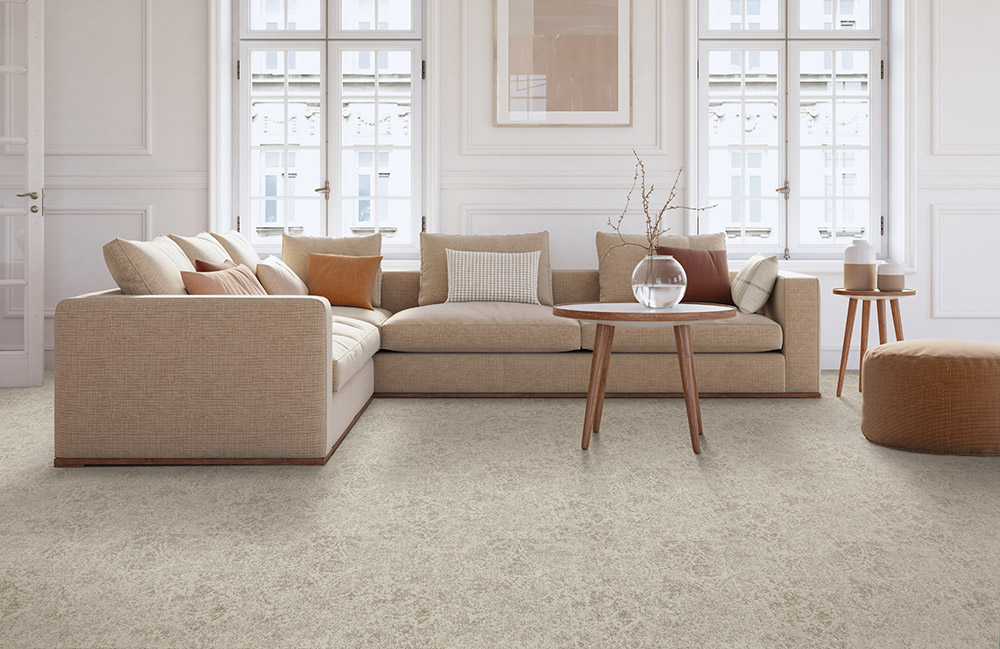
This guide is here to help.
And by the end of this, you’ll know how to choose the right carpet based on fiber type, durability, and maintenance needs. You’ll learn which carpets work best for different rooms, how to match styles and textures to your interior design, and how to select the ideal color for a cohesive look.
We will also cover the importance of carpet padding for comfort and longevity, along with essential installation and maintenance tips to help extend your carpet’s lifespan. Perfect for anyone renovating, redecorating, or replacing an old carpet, this guide provides the knowledge to make a confident choice.
Carpet remains a popular flooring option for homeowners. Unlike hard floors, carpet offers softness, warmth, and noise reduction, making it an excellent choice for living rooms, bedrooms, and family rooms.
Here’s why selecting the right carpet is a smart investment:
A quality carpet can last for years, if you choose the right one.
When choosing the right carpet, the fiber type is one of the most important factors to consider. The carpet fiber determines its durability, texture, stain resistance, and maintenance requirements.
Some carpet fibers are designed for high-traffic areas, while others focus on softness and luxury. Knowing the difference will help you choose the best carpet for your home.
Carpet is made from two main types of fibers:
Each carpet fiber has its own advantages and drawbacks. Let’s break them down.
| Carpet Fiber | Pros | Cons | Best For |
|---|---|---|---|
| Nylon | Highly durable, excellent stain resistance, great for high-traffic areas | Can be more expensive than other synthetic options | Living rooms, hallways, stairs |
| Polyester | Soft texture, vibrant carpet colors, budget-friendly | Less durable than nylon, may flatten over time | Bedrooms, low-traffic areas |
| High Performance Polyester (Pet Perfect) | Highly durable, superior stain and soil resistance, easy to clean | Can be more expensive than other synthetic options | Best For Living rooms, hallways, stairs, bedrooms |
| Wool | Natural, luxurious feel, good for air quality | Expensive, absorbs moisture, needs regular maintenance | Formal living spaces, master bedrooms |
| Triexta | Excellent stain resistance, soft and durable, eco-friendly (partly derived from renewable resources) | Less resilient than nylon, may show wear in high-traffic areas | Bedrooms, family rooms, moderate-traffic areas |
Nylon is one of the most durable and resilient synthetic carpet fibers, making it ideal for high-traffic areas. It resists wear, holds its shape well, and offers excellent stain resistance, especially when treated. While it is more expensive than other synthetic options, its longevity and easy maintenance make it a worthwhile investment.
Polyester is known for its softness, vibrant color options, and affordability. It naturally resists moisture and stains, making it a great choice for bedrooms and low-traffic areas. Although early versions lacked durability, modern polyester carpets have improved significantly in resilience. Many are made from recycled materials, making them an eco-friendly option.
High Performance Polyester Pet Perfect Carpet is designed with features to withstand the demands of pet ownership. Key attributes include superior stain and soil resistance, durability, and ease of cleaning, thanks to technologies like R2X® and LifeGuard® Spill-Proof. These carpets also utilize Anso® High Performance PET fiber, which is designed to release pet hair during vacuuming. They are often backed by warranties of 20 years or more.
Triexta is a newer type of carpet fiber that's soft, durable, and great at resisting stains. It’s partly made from renewable resources, so it’s also eco-friendly. Triexta carpets work well in family rooms or other areas with moderate foot traffic. Just keep in mind that, compared to nylon, triexta may not hold up as well in super busy areas.
Wool is a high-end, natural fiber known for its softness, durability, and insulation properties. It provides a luxurious feel but comes with a higher price tag and requires more maintenance than synthetic alternatives. Wool is eco-friendly and biodegradable.

Solid or two-tone, hides footprints and vacuum marks well.

Plush velvet look and luxurious feel. Exquisitely formal.

Also called berber, ideal for casual, active family rooms.

Multiple loop heights allow for visually stunning patterns.

The combo of cut and looped fibers delivers striking designs too.
Picking the right carpet isn’t just about the material, it’s also about the style and texture. The way a carpet is made affects how it looks, how it feels under your feet, and how well it holds up over time.
Some styles are built to handle lots of foot traffic, while others are all about soft, cozy comfort. Carpet styles fall into 3 main categories:
Cut pile carpets are trimmed at the top, giving them a smooth, velvety texture. They are soft, comfortable, and great for cozy spaces.
Loop pile carpets have uncut fibers, making them more resistant to wear and flattening, perfect for high-traffic areas.
Can’t decide between plush softness and durability? Loop cut loop carpets combine both styles, mixing cut and uncut fibers to create patterns and texture. Not only do these carpets look stylish, but they also do a great job at hiding dirt and stains, making them a great choice for high-traffic spaces that need a little extra flair.

Along with fiber type and construction, pile height and weight impact how a carpet looks, feels, and performs over time. While they shouldn’t be the only factors guiding your decision, understanding these details can help you choose a carpet that fits your needs.
Pile height refers to the length of the carpet fibers from the base to the tip. It affects how soft the carpet feels, how well it holds up to foot traffic, and how easy it is to maintain.
High-Pile Carpet: These carpets have longer, looser fibers, creating a plush, luxurious feel underfoot. They work best in bedrooms and low-traffic areas where comfort is the priority.
Medium-Pile Carpet: Offering a balance between softness and durability, medium-pile carpets feel comfortable while still being practical. They work well in living rooms, family spaces, and moderate-traffic areas, providing warmth.
Low-Pile Carpet: With shorter, densely packed fibers, low-pile carpets are the most durable and easiest to clean. They are ideal for high-traffic areas like hallways, stairs, and offices, as they resist wear and don’t trap dirt and pet hair as easily.
A high-pile carpet isn’t necessarily better than a low-pile carpet; it depends on your space and how much maintenance you’re willing to do.
Carpet weight refers to how much fiber material is used in a given area, which can impact durability and comfort. There are two key measurements to consider:
If you're comparing two similar carpets, looking at the face weight is a better indicator of durability than total weight.
Stitches per inch (SPI), measures how densely a carpet is woven. However, SPI can vary significantly depending on fiber type and style, making it an unreliable way to judge carpet quality.
When choosing a carpet, focus on fiber type, pile height, face weight, and construction rather than SPI numbers. Considering these factors, you can find a carpet that looks great, feels comfortable, and holds up well in your home.
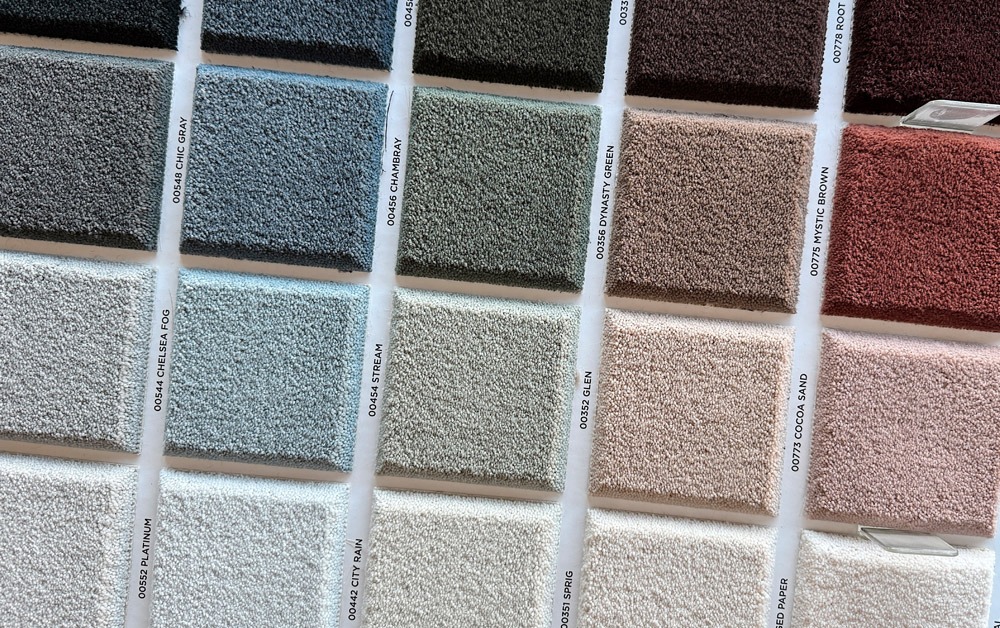
Selecting the right carpet color is just as important as selecting the best carpet material or style. The color of your carpet can change the mood, impact room size perception, and affect long-term maintenance.
This is one of the most common questions homeowners ask. The answer depends on the look and feel you want to achieve.
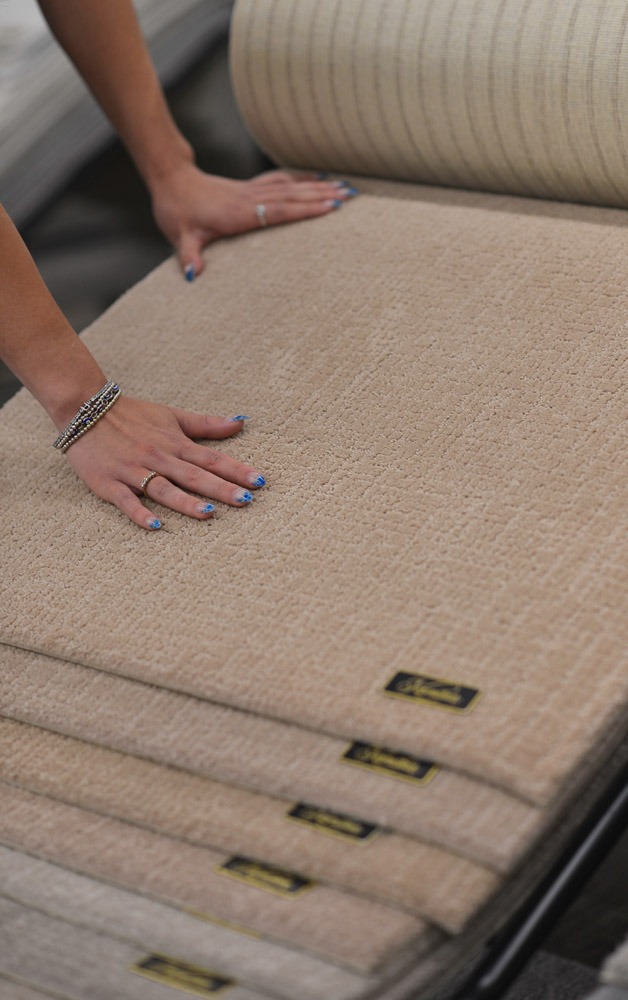
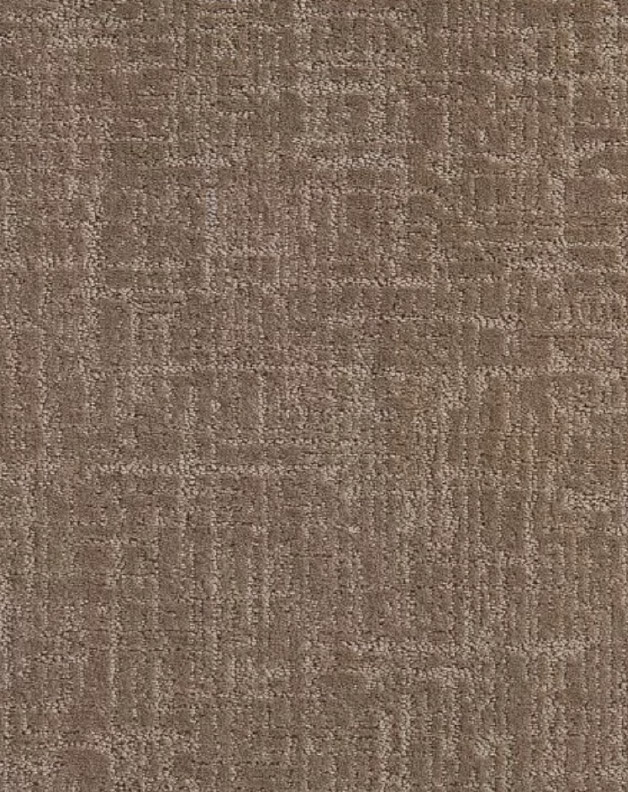
Tip: If you’re unsure, go for a neutral carpet in beige, taupe, or gray, as these shades work with almost any wall color and home design.
Carpet color can completely change the feel of a room, so picking the right shade is important. While trends come and go, neutral tones like gray, beige, and taupe stay popular because they’re versatile and easy to match with different décor.
If you want something bold, charcoal, deep blue, or earthy tones like brown and olive can add warmth and personality. Just be careful with trendy colors—what’s stylish today might feel outdated in a few years.
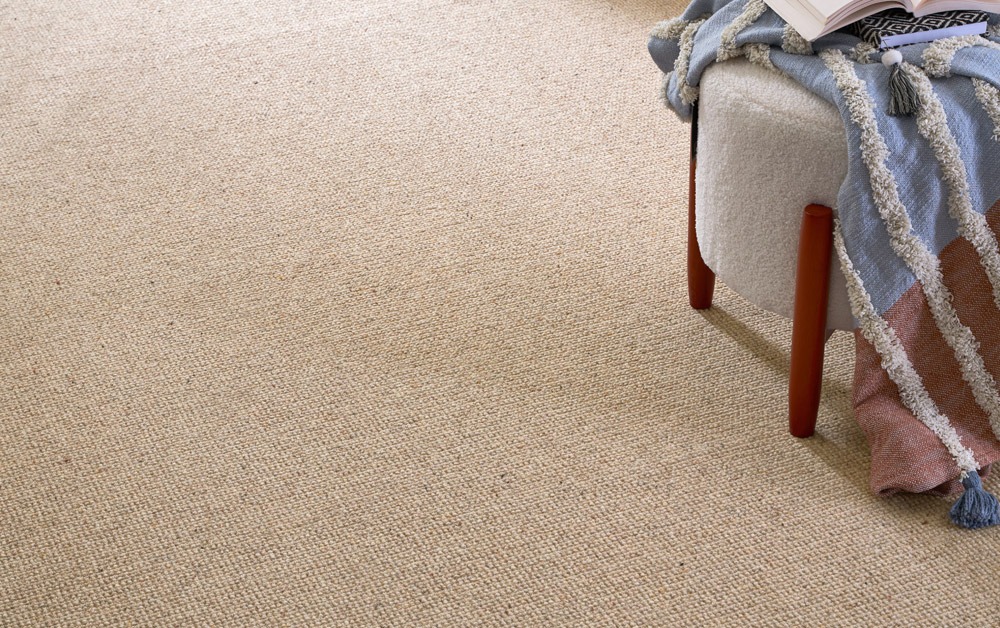
The best color also depends on where you’re putting the carpet:
Your home’s design style can also help guide your choice:
Not sure which carpet color works best? Choosing the right carpet color can transform your space, but it’s important to match it with your wall colors and home decor for a cohesive look. Explore our matching carpet with wall colors guide to visualize different carpet styles in your home before making a final decision. A color that looks perfect in the showroom may look completely different once it’s in your space.
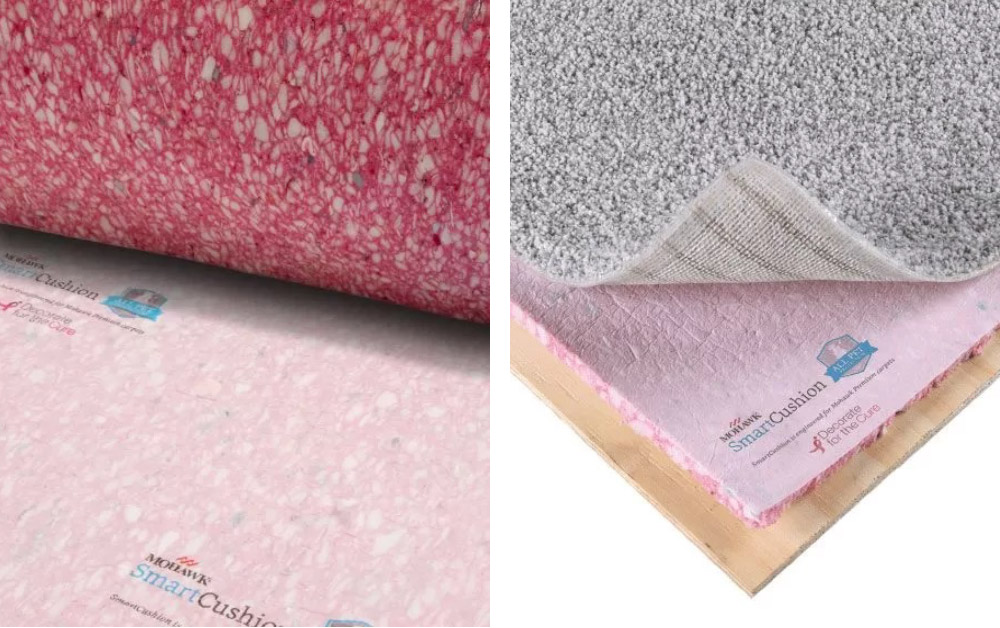
Carpet padding is often overlooked, but it’s one of the most important factors when choosing the right carpet for your home. It acts as the foundation of your flooring, affecting comfort, durability, insulation, and even stain resistance.
Carpet padding, also called carpet cushion, provides several key benefits:
The higher the quality of your carpet padding, the longer your carpet will last.
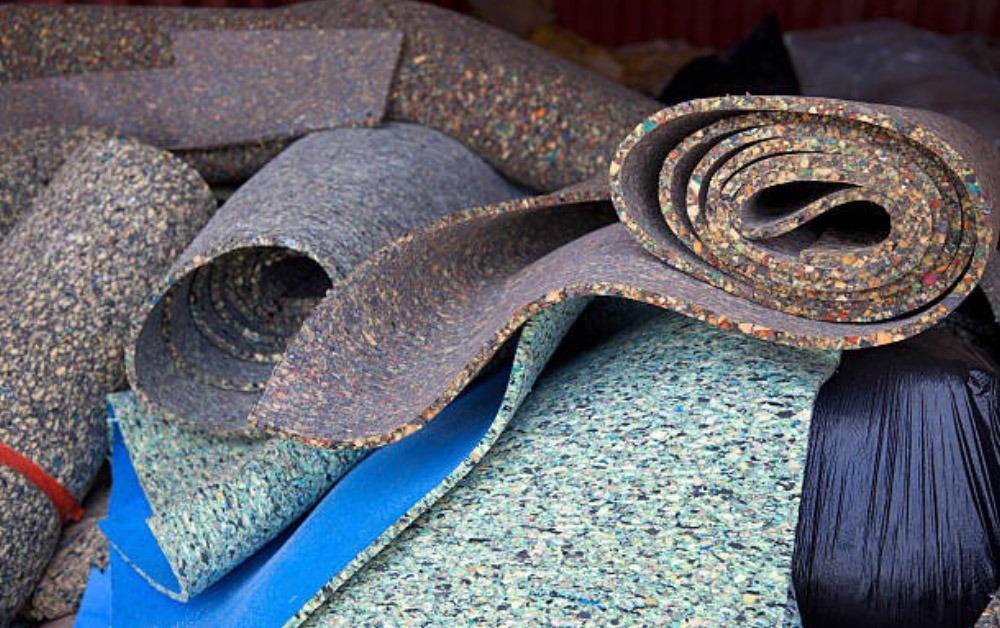
Choosing the right types of carpet padding is just as important as selecting the carpet itself. The right padding improves comfort, extends the lifespan of your carpet, and provides insulation and noise reduction. Below is a breakdown of different carpet padding types and where they work best.
| Carpet Padding Type | Features | Best For | Recommended Thickness |
|---|---|---|---|
| Rebond Padding | Made from recycled foam, durable, and budget-friendly | Most residential homes, living rooms, bedrooms | ¼" to ½" |
| Memory Foam Padding | Soft, ultra-plush feel | High traffic areas | 15/32 to ½" |
| Rubber Padding | Firm, high-density, excellent for noise reduction | High-traffic areas, stairs, commercial spaces | ¼" to ⅜" |
| Felt Padding | Dense and natural, often used with wool carpets | eco-friendly flooring | ¼" to ⅜" |
| Moisture-Resistant Padding | Prevents spills from soaking through | Basements, pet-friendly homes | Varies by type |
Take a look at available carpet options and find a style that fits your space and lifestyle.
Always check your carpet manufacturer’s recommendations because using the wrong padding can void your warranty.
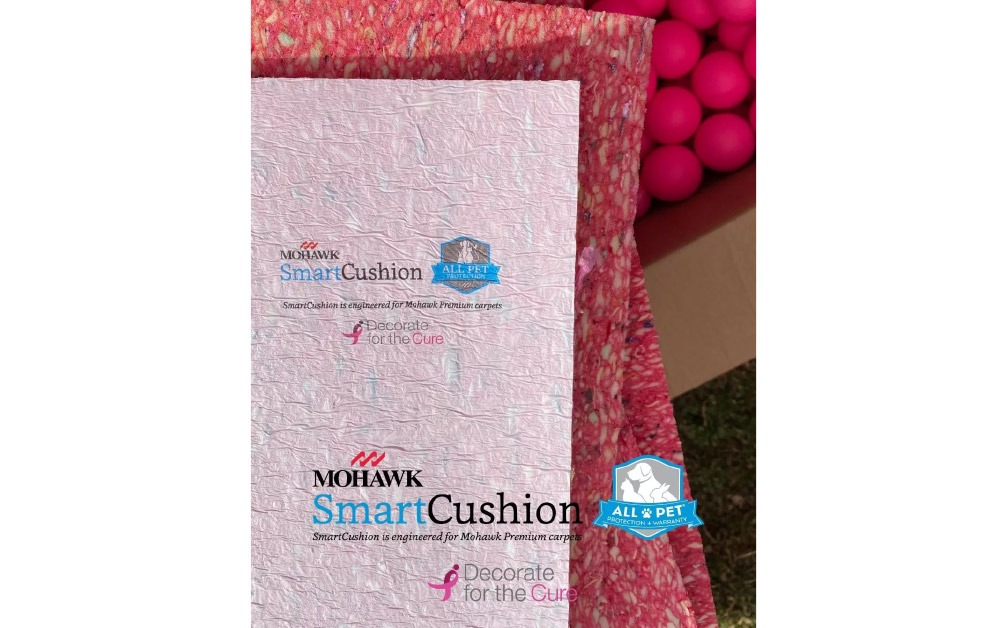
While some homeowners attempt DIY carpet installation, hiring a professional ensures the job is done right. A proper installation prevents wrinkles, extends the carpet’s lifespan, and creates a polished look. Here’s a breakdown of the process.
Carpet installation isn’t as simple as rolling out a rug. It requires proper tools, techniques, and expertise to ensure the carpet fits tightly, smoothly, and securely.
Tip: Ask about our warranties and request a detailed quote to ensure the timeline and project scope align with your desired outcome.
A professional estimator will take precise measurements to determine the amount of carpet and padding needed while minimizing waste. Seams are strategically placed in low-visibility areas whenever possible.
"Few seams are completely invisible, but an experienced installer will position them under furniture or out of major walkways," says Emad Ghanim, a carpet installer.
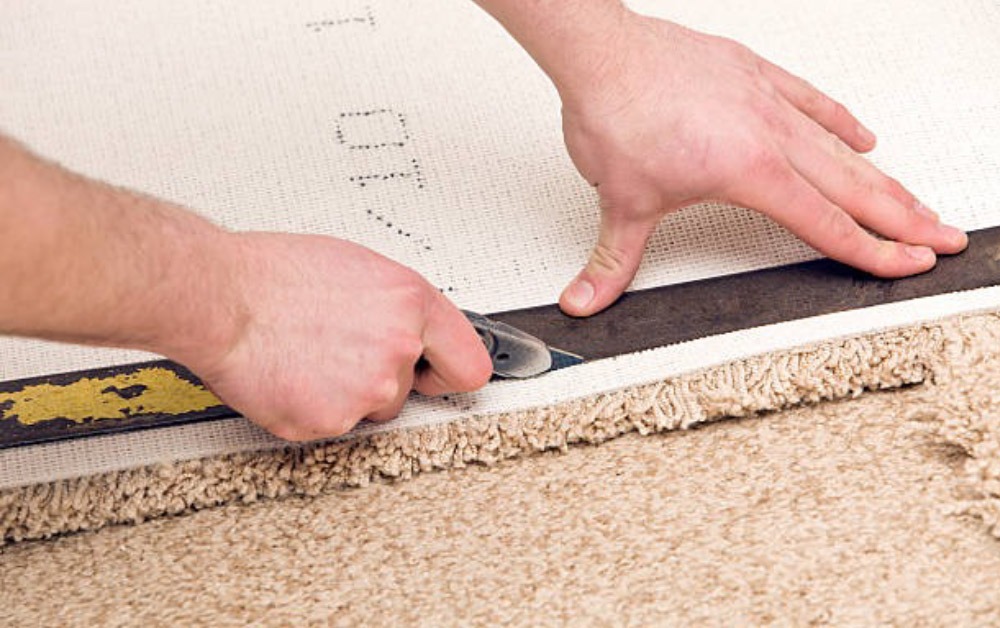
We will move furniture and remove old carpeting before starting. However, extra charges may apply for this service. Homeowners can save on costs by handling this themselves.
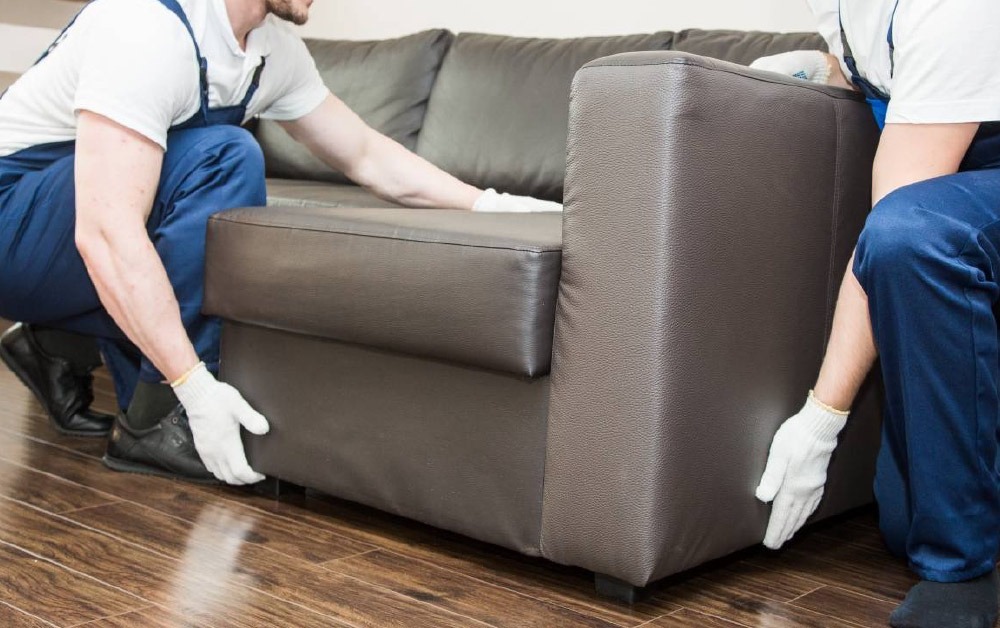
Old carpet and padding are usually cut into sections for easy removal. The installer will also inspect the subfloor to ensure it's clean, level, and free of damage before moving forward.
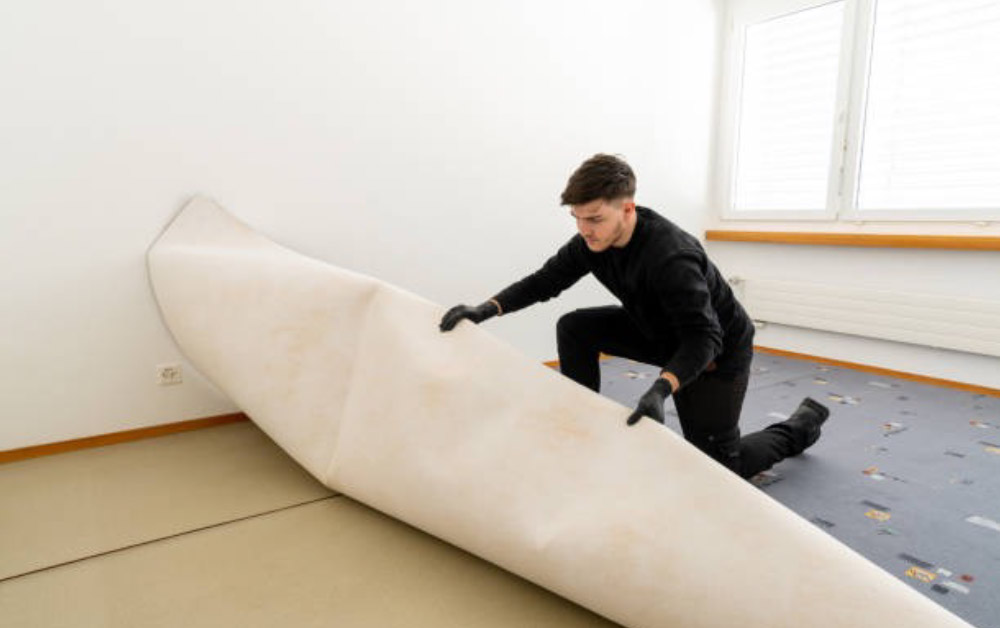
Tack strips, which help secure the carpet edges, are nailed along the perimeter of the room. These strips ensure a tight, professional fit.
Next, the carpet padding is installed. This layer adds cushioning, noise reduction, and insulation. It’s secured with either staples or adhesive to keep it in place.
Using the wrong type of carpet padding can affect durability and void your carpet warranty. Always follow manufacturer recommendations.
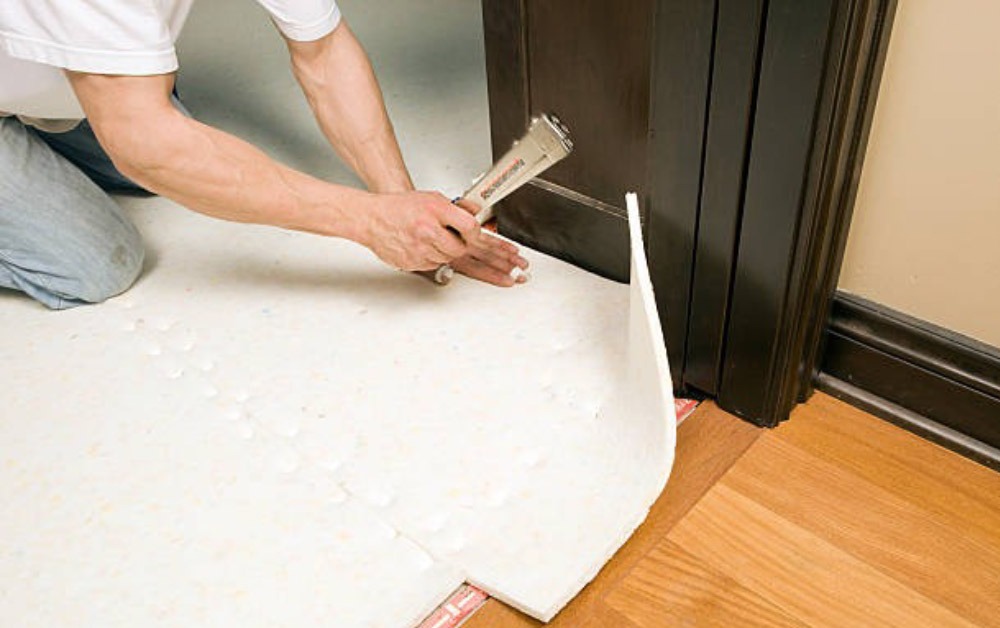
Once the padding is in place, the carpet is rolled out, trimmed, and positioned. A skilled installer will carefully align seams for a seamless appearance.
For rooms larger than 10x10 feet, professionals use a power stretcher to pull the carpet tight.
After stretching, the carpet edges are trimmed and tucked along walls and doorways. The installer will also perform final checks to smooth out any uneven areas and ensure a secure fit.
At this point, any seams are sealed with a special adhesive to prevent fraying or lifting over time.
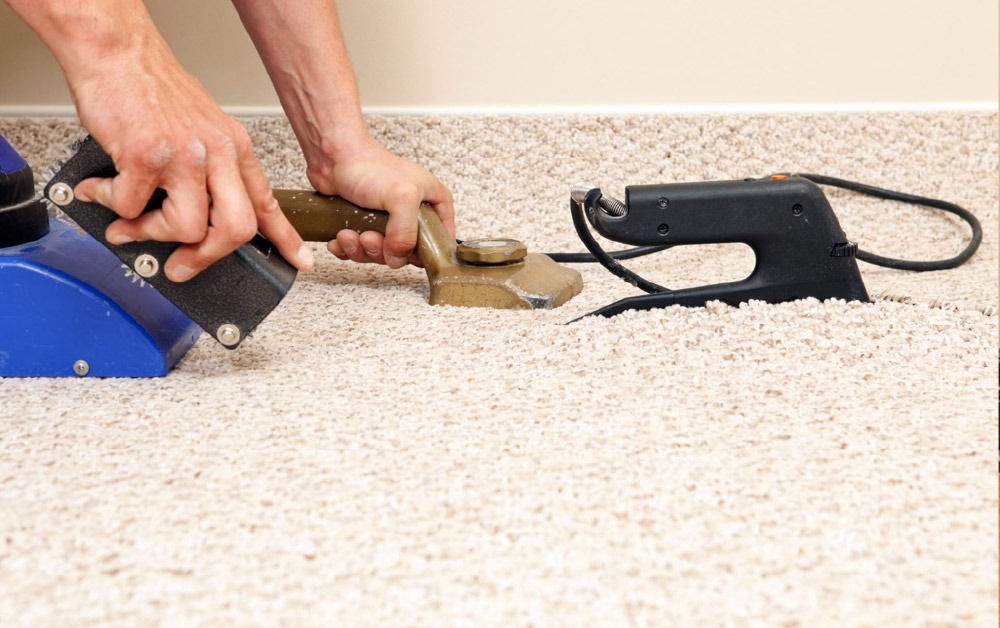
Final Step: The installer will vacuum and clean up debris, leaving the space ready for use.
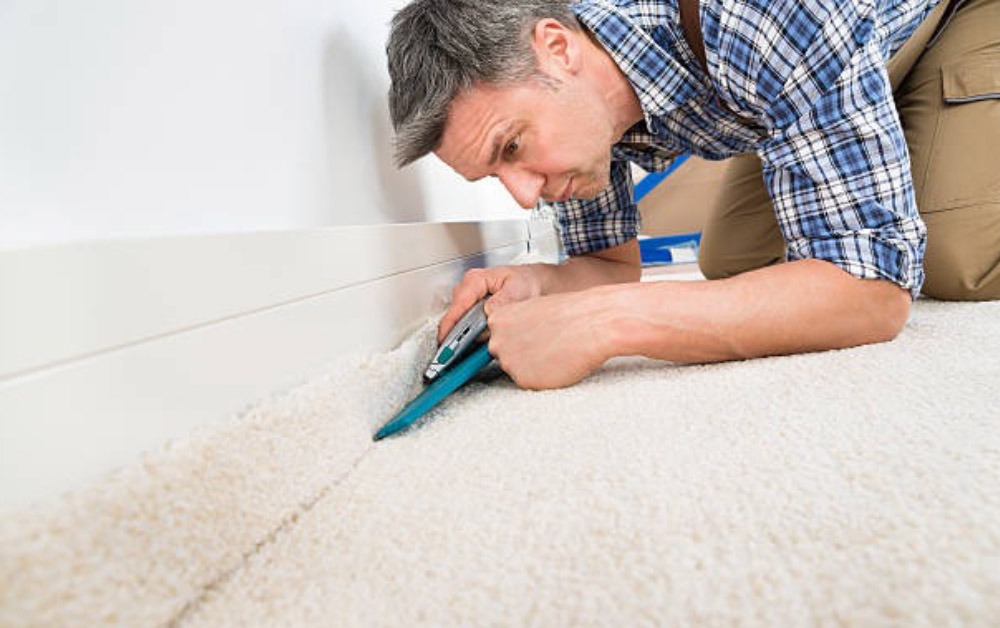
Professional carpet installation ensures your new flooring looks seamless, secure, and long-lasting. From precise measurements and proper padding to power stretching and seam placement, expert installers help maximize the lifespan and appearance of your carpet.
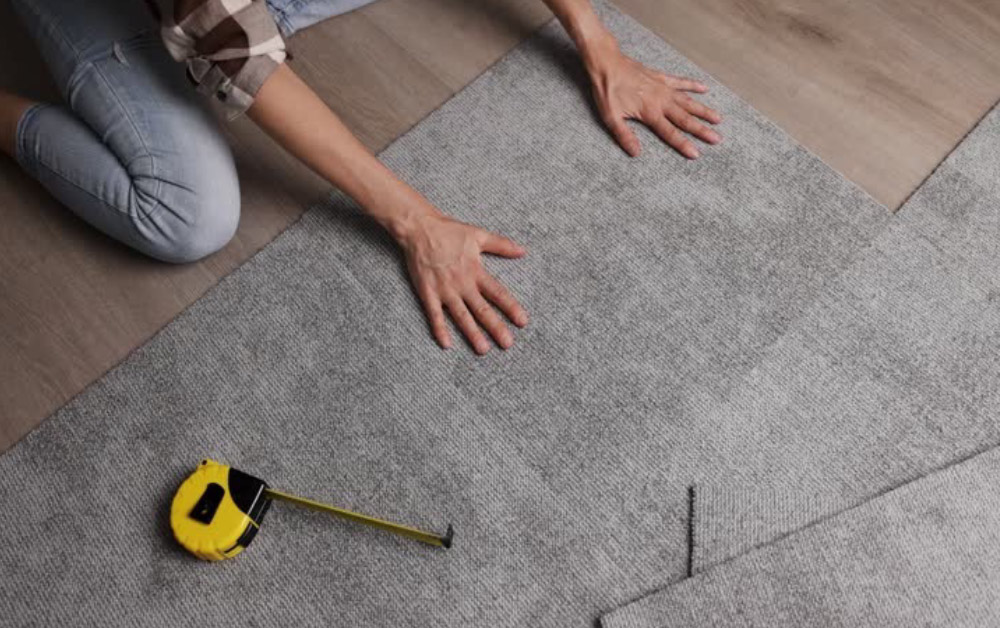
Some homeowners choose to install carpet themselves to save money, but it’s not as simple as rolling out a rug.
DIY installation might work for small rooms, but for large areas, stairs, or complex layouts, a professional installation is the best choice.
The cost of carpet installation depends on factors like carpet type, labor rates, and room size. See store for details. To save money, consider removing the old carpet yourself and moving furniture before installation day.
Once you've chosen the perfect carpet, regular carpet care will keep it looking great for years. Vacuum high-traffic areas twice a week and low-traffic areas weekly to prevent dirt buildup. Tackle spills immediately by blotting with a clean cloth and do not scrub, as this can damage the fibers.
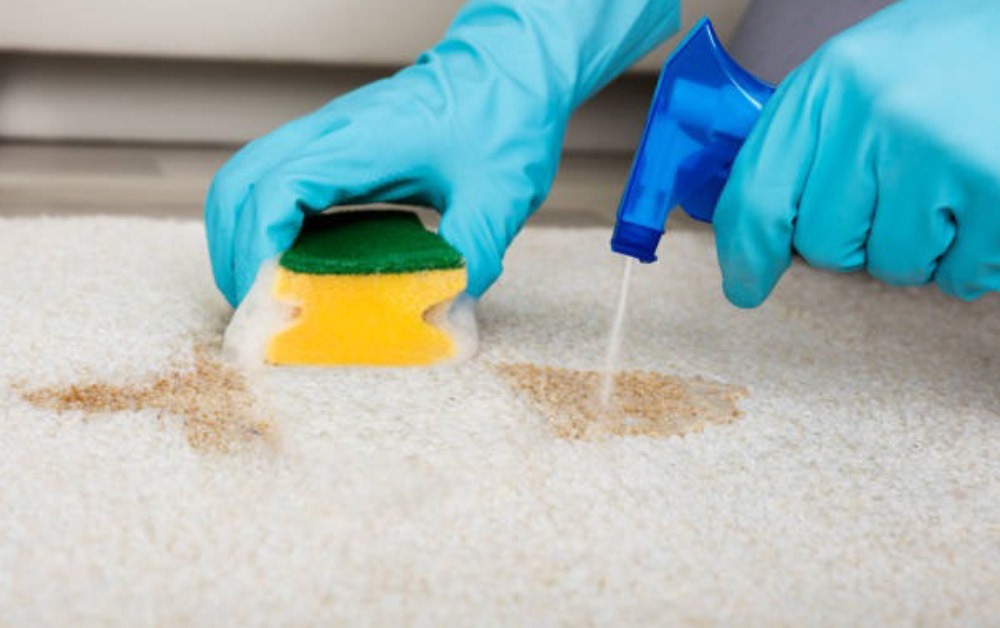
For deeper cleaning, you have options. You can rent a carpet cleaner for a DIY refresh, invest in a professional steam cleaning every 12-18 months, or hire a carpet cleaning service to handle tough stains and deep-set dirt. Professional cleaners offer high-powered equipment that removes allergens and extends your carpet’s lifespan.
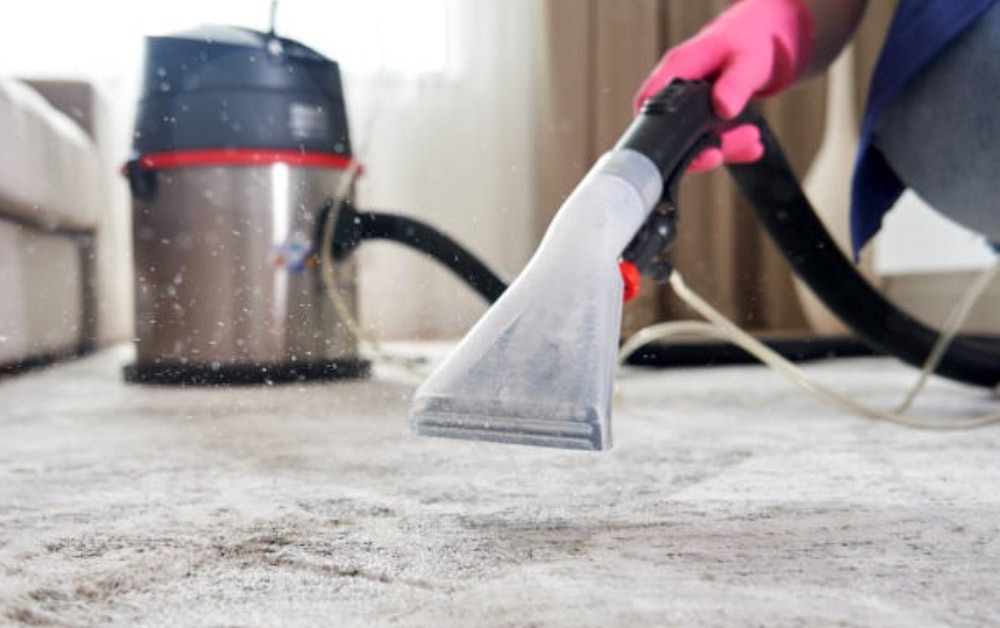
Some warranties require regular professional cleaning, so check the details to keep yours valid!
| Stain Type | Cleaning Method |
|---|---|
| Coffee & Tea | Blot with a mixture of white vinegar, dish soap, and warm water. |
| Wine & Juice | Use club soda or a mix of hydrogen peroxide and dish soap. |
| Pet Stains | Blot with a baking soda + vinegar solution to neutralize odors. |
| Grease & Oil | Sprinkle cornstarch or baking soda, let sit, then vacuum. |
| Ink & Marker | Dab with rubbing alcohol or hairspray, then blot with water. |
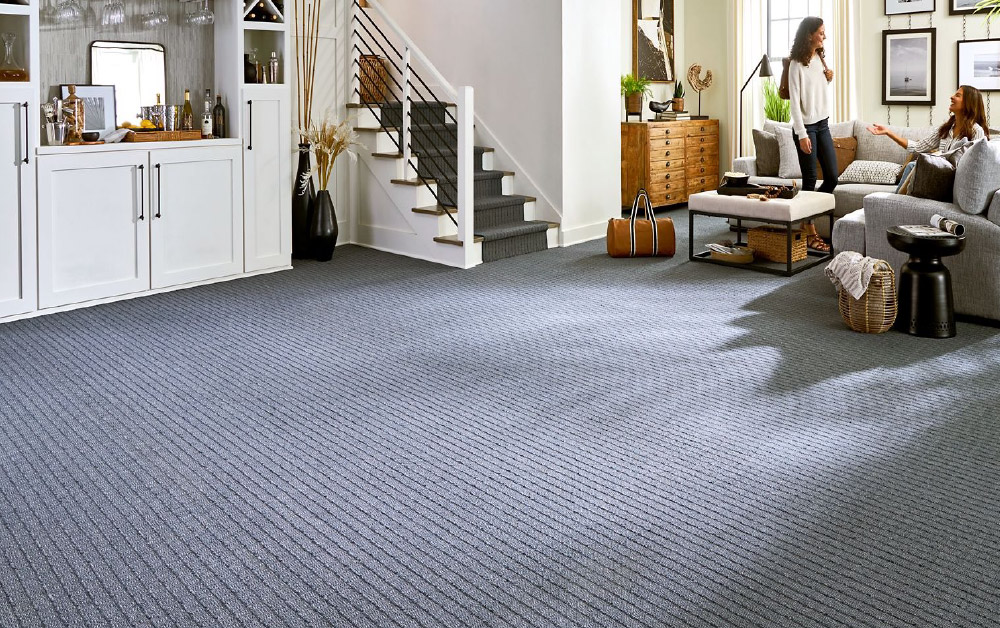
As more homeowners focus on sustainability and indoor air quality, the demand for eco-friendly carpets is growing. Choosing the right carpet doesn’t just impact your home’s aesthetic, it also affects the environment and your health.
Sustainable carpets offer several benefits:
If you're looking for an eco-friendly carpet, there are several great options. Wool carpets are natural, biodegradable, and even help purify indoor air, though they require more maintenance. Recycled polyester (PET) carpets, made from plastic bottles, are stain-resistant, low-maintenance, and ideal for high-traffic areas.
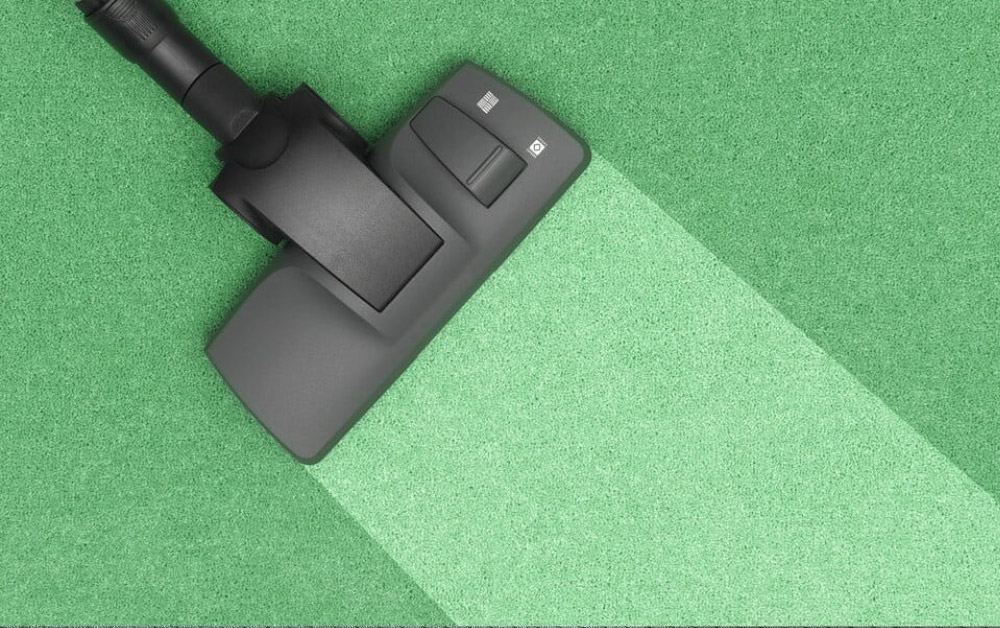
For a plant-based choice, sisal, seagrass, and jute carpets are durable, hypoallergenic, and mold-resistant but have a coarse texture. If you prefer a budget-friendly synthetic option, low-VOC carpets help improve air quality while offering a balance of sustainability and affordability.
Credits to Blue and Green Tomorrow
When selecting an eco-friendly carpet, look for third-party certifications that verify its sustainability and safety:
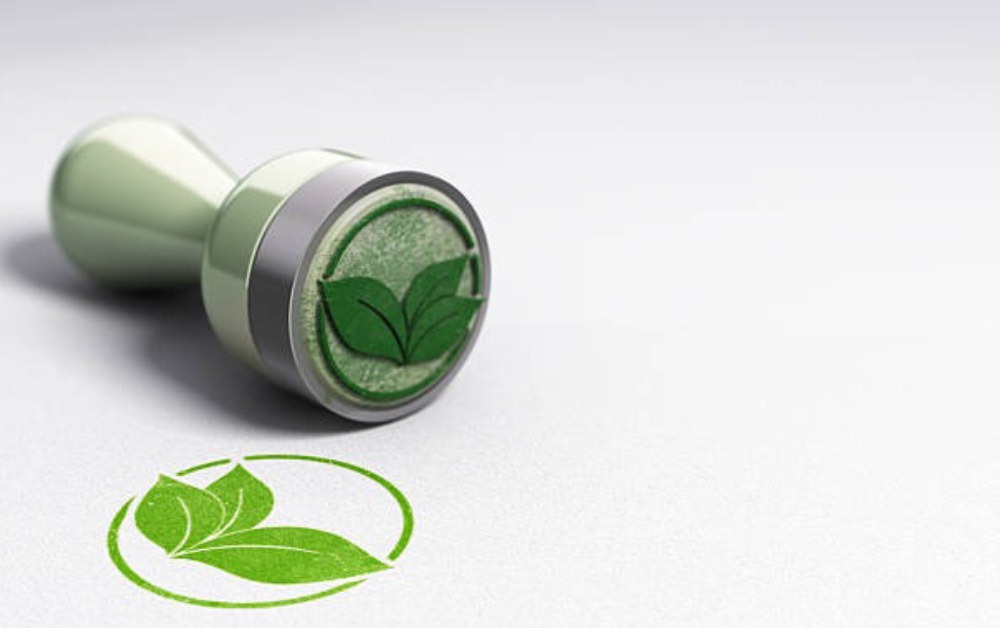
Choosing the right carpet comes down to durability, comfort, and style. If you’re carpeting a high-traffic area, go for something stain-resistant and tough. If you want a soft, luxurious feel, a plush cut pile might be the way to go. Padding matters too as it adds comfort and extends the life of your carpet.
Budget is important, but you don’t have to sacrifice quality. There are great options at every price point, and if sustainability is a priority, eco-friendly carpets are worth considering. Before making a final decision, test samples under different lighting to make sure the color works in your space.
Now that you know how to choose the perfect carpet, it’s time to explore different styles and find the best fit for your home. Browse our Carpet Catalog to check out a wide range of textures, colors, and materials that match your style and budget.
Better yet, visit a showroom, compare options, and talk to one of our team members. The right carpet will not only look great but also last for years with proper care.
A high-quality carpet can last anywhere from 5 to 15 years, depending on the fiber type, foot traffic, and maintenance. Nylon and wool carpets tend to last the longest, while polyester carpets may wear out faster in busy areas. Regular vacuuming and professional cleaning help extend the life of any carpet.
The best carpet grade depends on where it will be installed. For high-traffic areas, choose a high-density carpet with a face weight of 40 oz or more. For bedrooms and low-traffic areas, a plush polyester or wool carpet offers a softer, more luxurious feel.
A high-quality carpet has a high face weight, strong fiber density, and good twist rating. Nylon and wool carpets are known for their durability, while solution-dyed fibers offer better stain resistance. The higher the fiber density and tighter the weave, the longer the carpet will last.
Carpet is not ideal for bathrooms, kitchens, laundry rooms.. Better choices are tile, luxury vinyl, or hardwood for these areas.
Avoid low-density, cheaply made carpets with a face weight below 25 oz as they wear out quickly. Also, steer clear of unprotected natural fibers like untreated wool in high-traffic or spill-prone areas, as they stain easily.
A good quality carpet starts at $2 to $5 per square foot,, depending on the fiber type and density. Higher-end options like wool or premium nylon carpets start at $3.50 per square foot. Always factor in installation and padding costs when budgeting.